Putting the pieces together of sushi is relatively simple but also considered a type of food art. Just remember to not go looking for sushi rice as there is fundamentally no such thing. This is because sushi rice is actually short grain rice which, in rice cookers, should be cooked on using the short grain function. In this article we explain how to assemble two types of popular sushi – Hosomaki (or skinny) roll and Uramaki (or inside out) roll.
Set up your mat:
Place a sheet of cling film onto your makisu to prevent sticking then place a sheet of nori on top of this. If the nori has a shiny side place it face down.
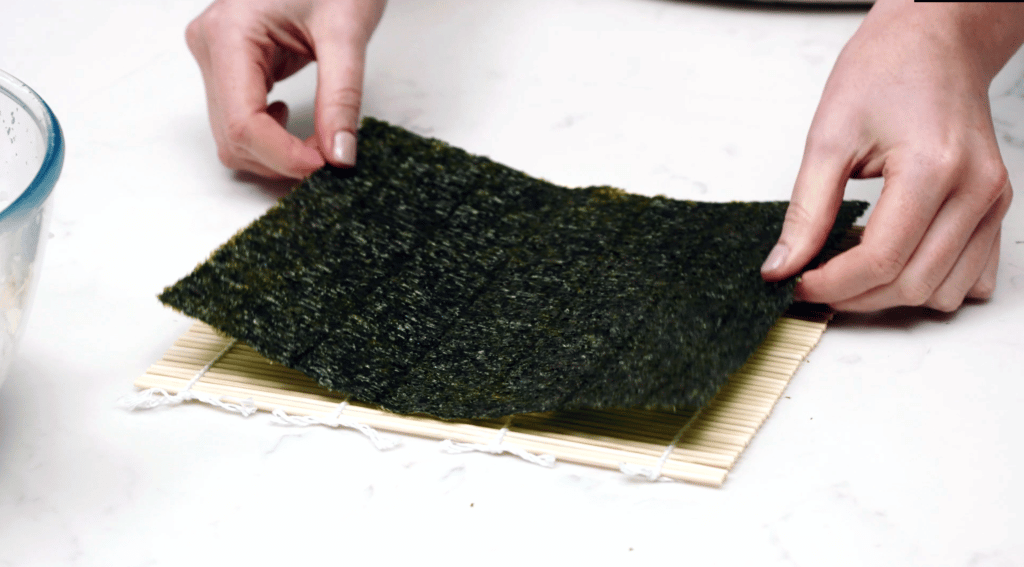
Place Nori/rice:
With damp hands/wet spoon spread some of your cooked short grain rice leaving a small space of nori empty at the top. Make 3 grooves in the centre of the rice for the fillings.
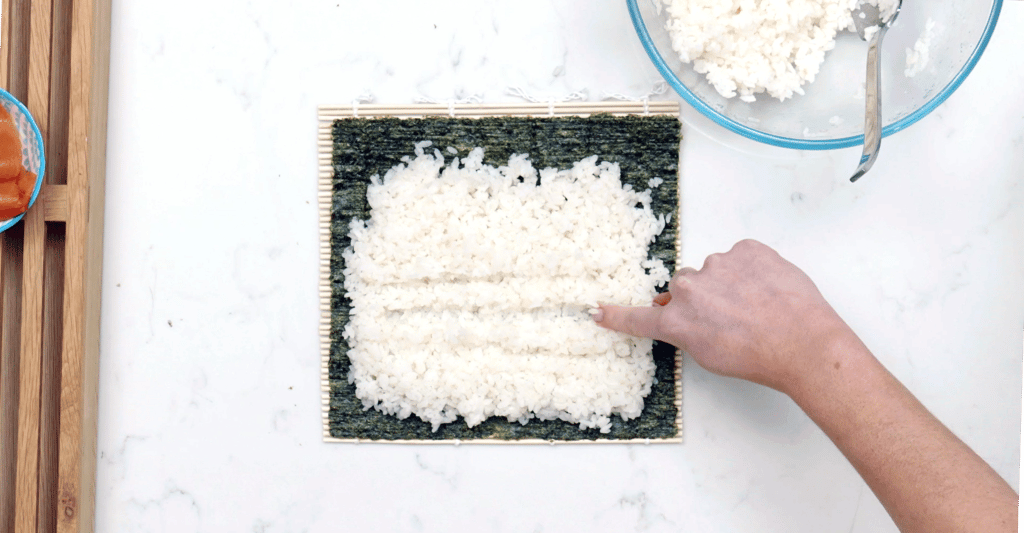
Add fillings:
Place desired fillings into the grooves. The fillings can be varied (listed earlier). Ingredients can be cut into small pieces to fit the roll. For Hosomaki it’s usually just one ingredient as the focus.
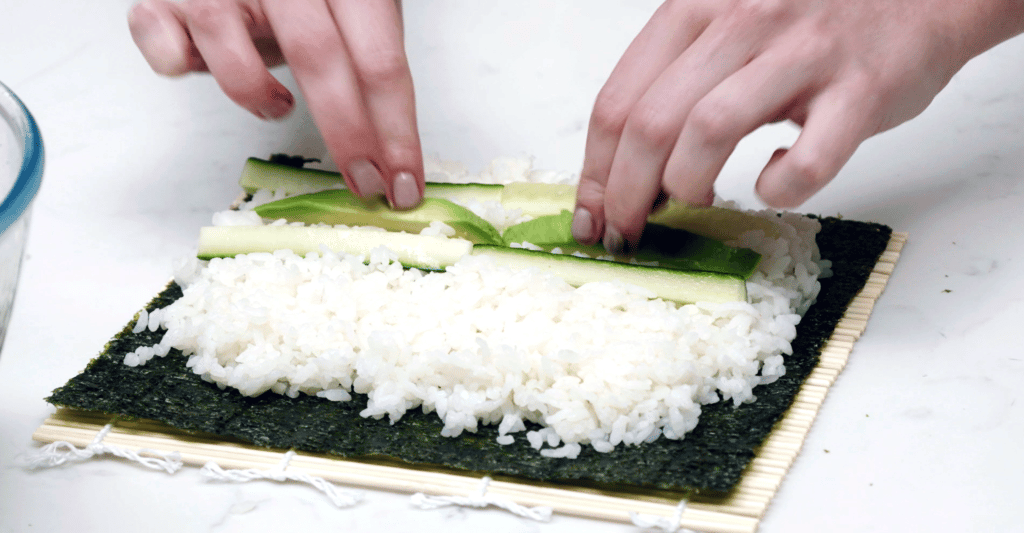
Roll and serve:
Tuck your thumbs under the makisu, hold the ingredients with your fingers, and roll onto the damp seaweed. Give the roll a good squeeze then cut into pieces (usually 6 pieces for Hosomaki).

Set up your mat:
Place a sheet of cling film onto your makisu to prevent sticking then place a sheet of nori on top of this. If the nori has a shiny side place it face down.

Place nori/rice:
With damp hands or wet spoon spread some of the cooked short grain rice and spread it edge to edge. Optionally sprinkle sesame seeds for decoration and flip over.
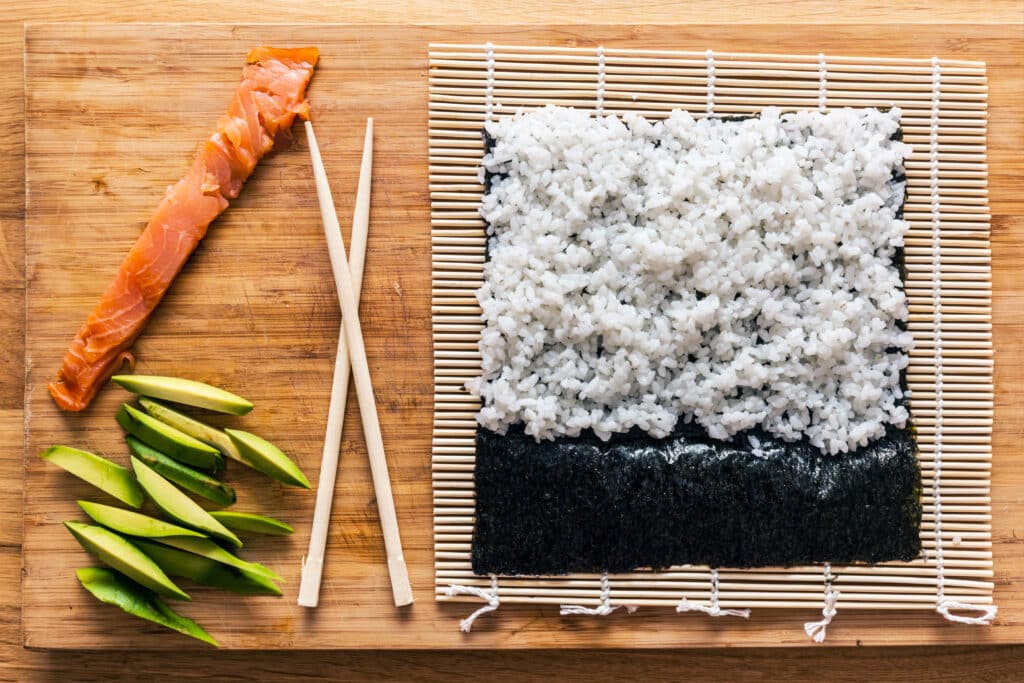
Add fillings:
You can now place the ingredients along the centre line of the nori. Tuck your thumbs underneath the makisu and place your fingers on the opposite side of the ingredients.
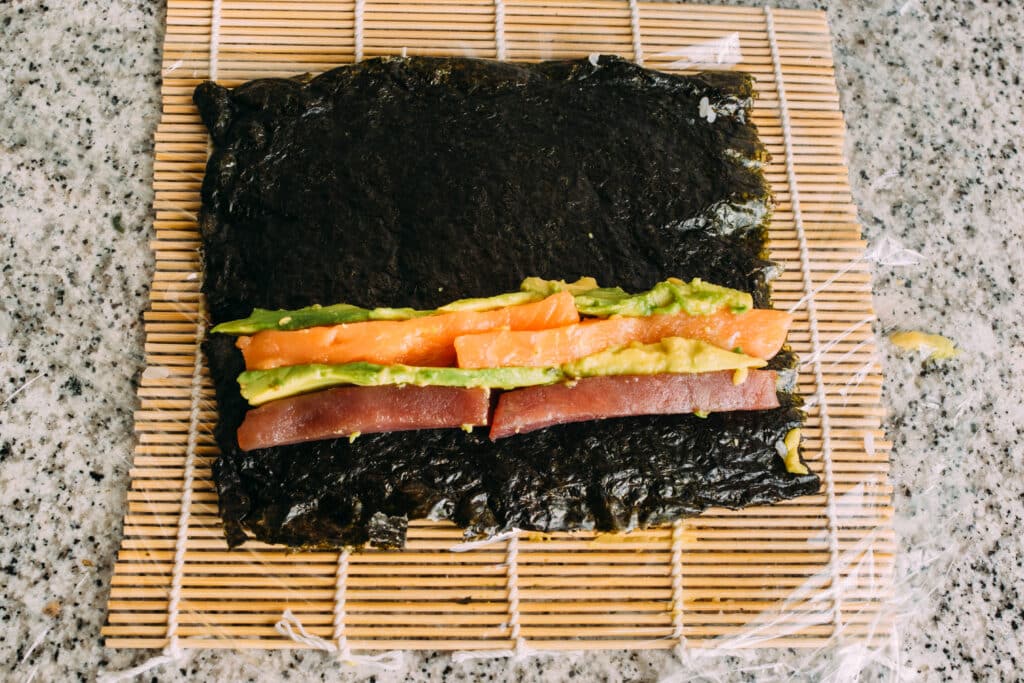
Roll and serve:
Roll your mat and nori towards your fingers and apply pressure. Grip the masiku and continue to pull it away from you. Usually for one nori sheet you cut into 8 pieces.
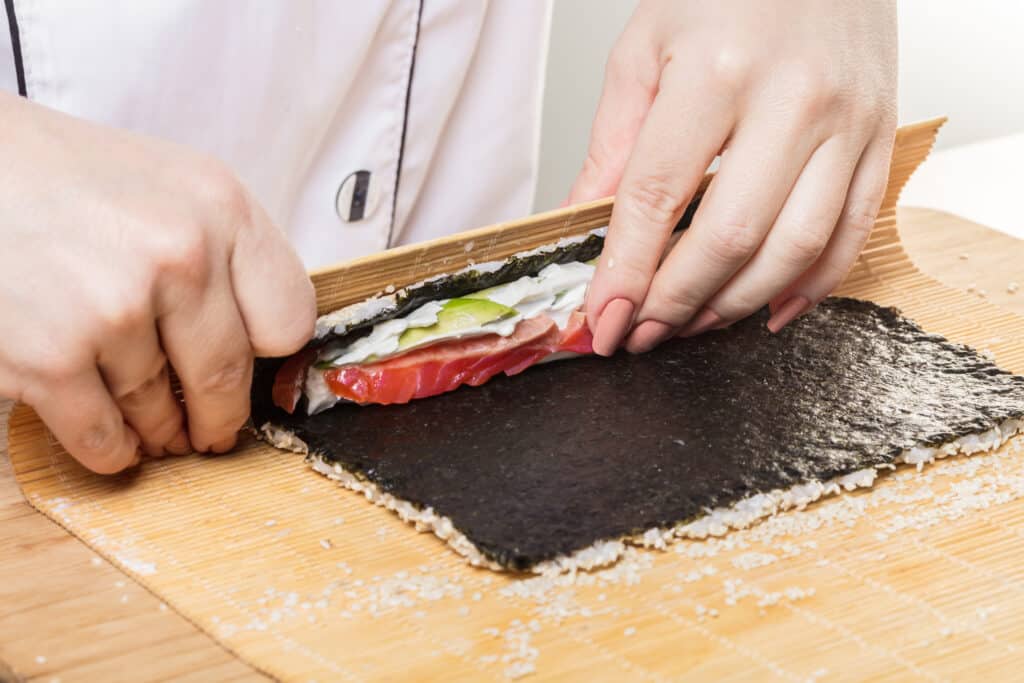
Ingredients
ETIQUETTE OF HOW TO EAT SUSHI
There is a certain etiquette that you should follow when you eat sushi in Japan or dine at
high-end restaurants everywhere in the world. Here’s a quick rundown:
• First, clean your hands with the wet towel placed next to you before you eat.
• Believe it or not, the proper way to eat maki and nigiri sushi is with the fingers, and the chopsticks are for sashimi. This is not a strict rule so choose what you are comfortable with.
• Go easy with the soy sauce, and pour only a little into the bowl (you can add more later). You’re supposed to savour the fresh taste of the fish and rice, not overpowering the sushi with the soy sauce. Look at your nigiri sushi carefully before you dip it in the soy sauce. Some nigiri sushi may have sauce already brushed on top (typically when you order omakase style sushi).
• Dip only the fish part of the sushi into the soy sauce. This flavours it more directly. Avoid dipping the rice as it will cause the sushi to fall apart.
• Do not mix your wasabi and soy sauce together. In many traditional sushi restaurants,
the wasabi is already added inside the sushi. Mixing wasabi with soy sauce will ruin both of these flavours.
• Try your best to eat the whole thing in one bite.

Uramaki can be pretty when layered correctly. Popular decoration includes tobiko (flying fish eggs (bright red/orange caviar), chives or black or white sesame seeds. Try making futomaki which is basically a thick version of hosomaki with more chunky ingredients in the centre.












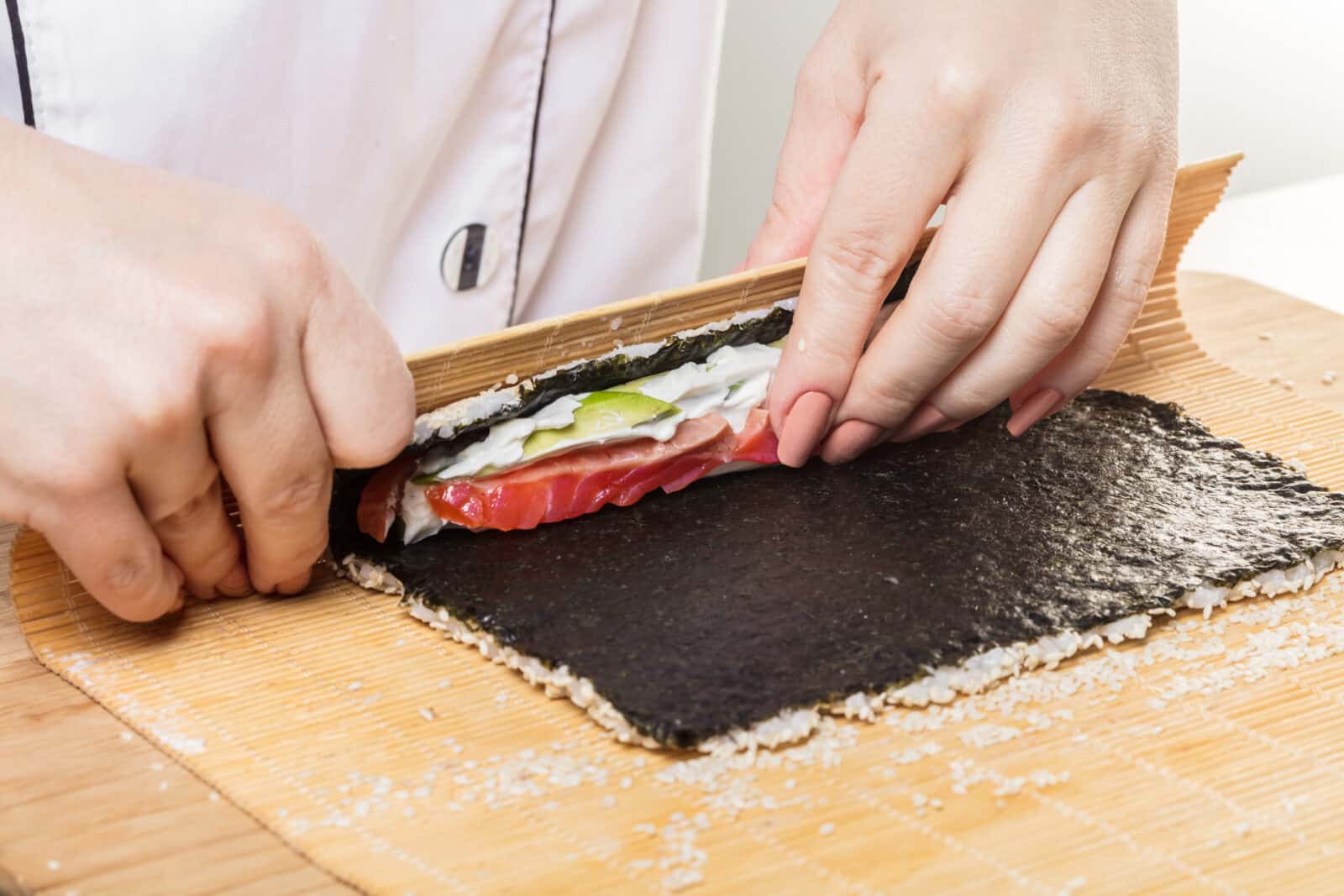













Leave a Reply